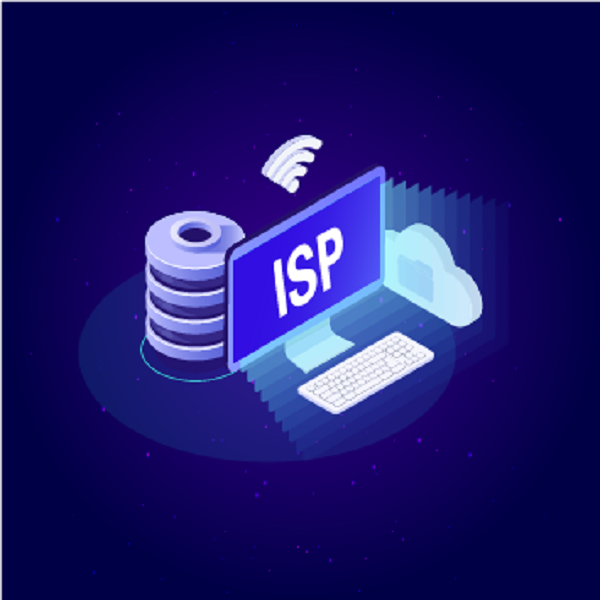Residential Proxies
Allowlisted 200M+ IPs from real ISP. Managed/obtained proxies via dashboard.

Proxies
Residential Proxies
Allowlisted 200M+ IPs from real ISP. Managed/obtained proxies via dashboard.
Residential (Socks5) Proxies
Over 200 million real IPs in 190+ locations,
Unlimited Residential Proxies
Use stable, fast, and furious 700K+ datacenter IPs worldwide.
Static Residential proxies
Long-lasting dedicated proxy, non-rotating residential proxy
Dedicated Datacenter Proxies
Use stable, fast, and furious 700K+ datacenter IPs worldwide.

Web Unblocker
View content as a real user with the help of ABC proxy's dynamic fingerprinting technology.
Proxies
API
Proxy list is generated through an API link and applied to compatible programs after whitelist IP authorization
User+Pass Auth
Create credential freely and use rotating proxies on any device or software without allowlisting IP
Proxy Manager
Manage all proxies using APM interface

Proxies
Residential Proxies
Allowlisted 200M+ IPs from real ISP. Managed/obtained proxies via dashboard.
Starts from
$0.77/ GB
Residential (Socks5) Proxies
Over 200 million real IPs in 190+ locations,
Starts from
$0.045/ IP
Unlimited Residential Proxies
Use stable, fast, and furious 700K+ datacenter IPs worldwide.
Starts from
$79/ Day
Rotating ISP Proxies
ABCProxy's Rotating ISP Proxies guarantee long session time.
Starts from
$0.77/ GB
Static Residential proxies
Long-lasting dedicated proxy, non-rotating residential proxy
Starts from
$5/MONTH
Dedicated Datacenter Proxies
Use stable, fast, and furious 700K+ datacenter IPs worldwide.
Starts from
$4.5/MONTH
Knowledge Base
English
繁體中文
Русский
Indonesia
Português
Español
بالعربية


This article deeply analyzes the core principles of Instagram's proxy detection mechanism and provides a complete unblocking solution from basic environment configuration to advanced protocol disguise, covering key technical nodes such as device fingerprint modification and traffic feature obfuscation.
1. Analysis of the underlying logic of proxy blocking
Instagram identifies proxy traffic through three dimensions:
IP reputation rating system: detects data center IP segments (AWS/Alibaba Cloud, etc.) and marked proxy IP pools
TLS fingerprint verification: analyzing the cipher suite ordering, extension fields and other features in the ClientHello message
Behavioral pattern modeling: monitor user behavior parameters such as request frequency, device rotation cycle, and operation trajectory
2. Basic environment configuration plan
2.1 Proxy Service Selection Strategy
Dynamic rotation of residential proxy: change the real residential IP every 10-30 minutes (it is recommended to choose abcproxy's unlimited traffic residential proxy service)
4G mobile proxy network: dynamic public network IP is allocated through cellular network base stations (IP purity is higher than traditional broadband)
Socks5 protocol tunnel: Cooperate with WireGuard to realize protocol-level traffic encryption (avoid deep packet inspection DPI)
2.2 Device Fingerprint Reset Technology
Browser fingerprint modification: Use the FingerprintSwitcher extension to randomly generate Canvas/WebGL/font fingerprints
Android device parameter disguise: modify the device model and Android version information in Build.prop through the Xposed framework
MAC address randomization: Use the macchanger tool at the routing layer to change the physical network card address every 6 hours
3. Advanced traffic camouflage solution
3.1 TLS fingerprint customization technology
Modify the SSL library configuration of the Chromium kernel to make the TLS handshake characteristics completely consistent with Chrome version 120+
Customize the ClientHello extension field order: server_name→extended_master_secret→supported_versions
Disable uncommon cipher suites (such as TLS_ECDHE_ECDSA_WITH_CHACHA20_POLY1305_SHA256)
3.2 HTTP request feature optimization
Inject randomized request headers: X-Forwarded-For/Accept-Language/Sec-CH-UA is generated according to the real user distribution ratio
Simulate mobile terminal request characteristics: maintain Connection: Keep-Alive, set Downlink: >10 Mbps
The request interval uses a Poisson distribution model (λ=3.5 seconds) to avoid triggering risk control at fixed time intervals
3.3 Traffic shuffling technology
Disguise Instagram traffic as video streaming through Shadowsocks+Obfs4 protocol obfuscation
Use the QUIC protocol to replace the TCP transport layer and use the UDP packet characteristics to avoid connection status analysis
Insert 10%-15% noise traffic in the proxy link (simulating YouTube video buffering behavior)
4. Enterprise-level unblocking solution
4.1 Distributed IP Pool Architecture
Build a cross-region proxy node cluster (recommended to cover North America, Europe, and Southeast Asia)
Use IP reputation real-time monitoring system to automatically remove IP segments marked by Instagram
Combined with load balancing technology to achieve intelligent routing selection (delay <150ms, packet loss rate <0.5%)
4.2 Multi-account collaborative management
Configure an independent environment for each account:
Dedicated browser container (environment isolation through Docker)
Differentiated Cookies Storage Strategies
Regional content access mode (e.g. US accounts can only access English content)
Set account operation cooldown period: randomly sleep for 15-45 minutes after like/follow operation
4.3 Protocol-level reverse engineering
Use Frida tool to dynamically hook Instagram client encryption function
Rewrite the API request signature algorithm to make the request characteristics completely consistent with the official APP
Tampering with device information reporting parameters (such as device_id/adid) through MITMproxy middleware
5. Emergency response and troubleshooting
5.1 Blocking event diagnosis process
Use the IPQS tool to check the reputation score of the current IP (the threshold must be >85/100)
Verify that the TLS fingerprint meets the standard browser characteristics by capturing packets with Wireshark
Check whether the X-IG-App-ID header is the latest version (current valid value: 567067343352427)
5.2 Rapid Unblocking Technology Solution
Immediately switch to 4G mobile network and clear all browser storage data
Modify the Hosts file to point to the Instagram alternate API endpoint (e.g. i.instagram.com → 157.240.241.174)
Use a temporary virtual phone number to complete the second verification (Google Voice or Twilio services are recommended)
5.3 Long-term protection strategy
Deploy an IP reputation monitoring system to automatically switch proxy nodes when the alert threshold is triggered
Establish a behavior pattern learning model to simulate the content consumption habits of real users (average daily browsing time > 40 minutes)
Update the device fingerprint parameter library regularly (it is recommended to generate a new device configuration file every week)
As a professional proxy IP service provider, abcproxy provides a variety of high-quality proxy IP products, including residential proxy, data center proxy, static ISP proxy, Socks5 proxy, unlimited residential proxy, suitable for a variety of application scenarios. If you are looking for a reliable proxy IP service, welcome to visit the abcproxy official website for more details.
Featured Posts
Popular Products
Residential Proxies
Allowlisted 200M+ IPs from real ISP. Managed/obtained proxies via dashboard.
Residential (Socks5) Proxies
Over 200 million real IPs in 190+ locations,
Unlimited Residential Proxies
Use stable, fast, and furious 700K+ datacenter IPs worldwide.
Rotating ISP Proxies
ABCProxy's Rotating ISP Proxies guarantee long session time.
Residential (Socks5) Proxies
Long-lasting dedicated proxy, non-rotating residential proxy
Dedicated Datacenter Proxies
Use stable, fast, and furious 700K+ datacenter IPs worldwide.
Web Unblocker
View content as a real user with the help of ABC proxy's dynamic fingerprinting technology.
Related articles

How to get data using BeautifulSoup
This article discusses how to use BeautifulSoup to obtain data, and introduces the important role of proxy IP in web page collection. It recommends the use of abcproxy's high-quality proxy IP products.

How to use Batchdata to optimize large-scale data processing
This article analyzes the core value and technical implementation path of Batchdata, explores how to improve the efficiency and security of batch data processing through proxy IP services, and provides practical guidance for enterprise-level data management.

Core technology of browser automation: dynamic rendering processing and anti-crawling
This article deeply analyzes the key breakthroughs of browser automation technology in 2025, from underlying protocol analysis to distributed architecture design, and details engineering-level solutions to core problems such as dynamic page rendering, fingerprint obfuscation, and verification code cracking.